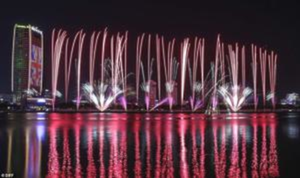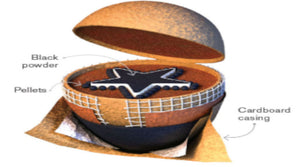The Story Behind Las Fallas Festival

Loud, unexpected explosions in the middle of the day often give visitors to Valencia a fright. After all, who’s expecting a firework display at 2pm? After the initial shock, you might wonder what the point is of letting off all those fireworks in broad daylight anyway. This is the mascletà, one of the Valencia region’s most-loved traditions.

The mascletà is best described as ‘noise fireworks’, where the most important factors are the rhythm of the explosions, the amount of noise made and the amount of smoke created. Light and colour don’t really come into it; barely visible anyway in the intense sunshine.

The mascletà is a major part of the city’s huge Las Fallas festival, shaking the city centre to its foundations for five minutes every day for weeks before the festival even begins. In fact, if you visit Valencia in mid-March you might think you’ve accidentally landed in a war zone. The air is thick with the smell of gunpowder and the sound of firecrackers going off almost constantly, with people letting off their own bangers in the streets from morning ’til night.

The display starts off strong but at a sombre pace, building in intensity with a carefully-planned rhythm, until all hell breaks loose at the crescendo and it becomes so overwhelmingly loud that you wonder if something has gone wrong. Nope. It really is supposed to shake you to your core – and you really are supposed to be partially deaf for a few hours afterwards.
If you see people standing there with their mouths open, it may or may not be because they’re in shock. Valencians say you should open your mouth during the mascletà and you should NOT cover your ears, because ‘all those sound waves need somewhere to go’. Sounds legit.

Today, spectacular papier-mâché statues (called fallas) are erected throughout the city. A falla is made up of ninots arranged to create a scene, typically satirical and of political nature which often include topical characters such as celebrities and politicians. There are two types of fallas – falla infantil (children’s falla) and main falla. Each neighbourhood has one of each.
During the festival the whole city moves out to the streets, where every year between 15th and 19th March, the whole city becomes an outdoor art gallery and never-ending party. The fallas are displayed for a few days, and on the last day of the festival they are burnt on a symbolic cleansing act celebrating the arrival of spring.

It is a real spectacle and experience to witness these pieces of art that sometimes cost millions of euros and a lot of skill and effort to create, razed to the ground to a pile of ashes.
Making huge bonfires in the middle of a city may sound like a crazy thing to do, but fire brigades from all over Spain travel to Valencia for La Cremà. The burning of the main fallas is staggered so the fire brigade teams can make it from one falla to the next to ensure everything is burnt safely and in a controlled manner.

- Peter Hemmings







Comments 2
Tom Archer
After reading about this festival I will be sure to attend in the coming years.
Love it!
Tom Archer .
Jack Allsopp
Having been to this event every year now for the last 15 years last year was the first time that I didn’t attend these are magnificent events it was a good read.
Let’s hope that things get back to normal soon and we can all enjoy fireworks once again